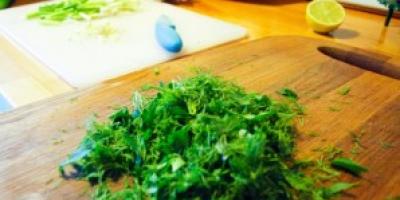Now many smokers are beginning to think about their health, many are quitting this habit, while others are switching from cigarettes to regular tobacco, which contains much less impurities. However, it requires a tube. The retail chain offers them wide choose, but really high-quality copies are very expensive. And now we will discuss how to make a smoking pipe yourself.
Material for making a smoking pipe
Masters make smoking pipes from briar. It is a growth at the root of a tree called heather. It is ideal for creating such a specific product. After all, heather grows in the rocky soil of the Mediterranean climate, and briar absorbs moisture and minerals, which subsequently give all the necessary qualities to the tree, which is so valued by the craftsmen who make smoking pipes from it.
Local tree species to create a smoking pipe
However, this tree does not grow in our area, and if you buy it, it will not be cheap. You can do it yourself, materials for which can easily be found in local gardens. Fruit trees with dense wood are suitable for making a pipe: apple, pear, plum. But it is best to choose cherry; its fibers are the densest of the listed species, so it will not burn out for a long time. All the others are also good, but they char a little faster. It is advisable to use the root part for harvesting, but branch or stem material is suitable. Fruit trees They have a great flavor when smoked. Some people like the taste of cherry, others like apple, it all depends on your own preferences. This is also why it is better to make a smoking pipe with your own hands.

Preparation of material
Having decided on the type of wood, you also need to find out how to properly dry a suitable piece. You cannot cut a living branch or part of a root and immediately make a tube out of it. The cuts on the material are painted over or sealed so that moisture cannot quickly evaporate through them. It should gradually come out through the bark, which in no case should be removed immediately. And so the tree should lie until next year - then the fibers will gradually dry out, and there will be no cracks in their structure. And only after this time will it be possible to remove the bark and grind out the shape of the smoking pipe.
You can also make a smoking pipe from a dried log. To do this, you need to cut the workpiece from its center. Of course, if it was in a dry place. The extreme places with cracks are cut off, after which there is solid wood that has no flaws. After this, the bark is removed and cut out right size blanks, but with a margin of five centimeters. Then the wood is put aside for a week, because it must completely dry out, after which microcracks may well appear. If you immediately start grinding out the shape of the smoking pipe, then the revealed flaws will ruin everything. And after a week, even if small cracks open, they will be in the remaining stock, and after cutting it off there will be an ideal surface for carving.

Manufacturing process
To begin, cut out a simple angular blank resembling a square or diamond. Its surface must be sanded in order to clearly see the structure of the wood and determine whether there are any defects on it. If everything is good, we mark the future shape in more detail so that we know where the smoking chamber will be, and where the shank is - this is the part where the mouthpiece is attached. You need to mark all the details and holes with a pencil. It is also worth drawing directions to make it easier to maintain angles when drilling.
When making smoking pipes with their own hands, craftsmen first drill a hole for the chamber into which tobacco will be poured. First, you should do this with a thin drill, and then select a thicker one until the hole reaches the desired diameter. But you shouldn’t immediately bring it to the final size; you need to leave an allowance of a few millimeters so that you can sand it later sandpaper. After all, the drill leaves uneven surface, and it should be smooth.
After this, a smoke channel hole is drilled on the side in the place where the chibouk is intended. This must be done carefully, because making smoking pipes with your own hands is a very precise and labor-intensive process. The hole for smoke exhaust must be strictly at the bottom of the tobacco chamber. This is very important point, because if you make it a little higher, the tobacco inside will not burn out completely, which can lead to souring, and this will worsen the taste of the pipe and smoke. This channel can be from 3 to 4 mm. The wider it is, the drier the tube will be. By the way, it is better to equip it with a filter to prevent ash from getting into the middle. In addition, the wide smoke channel makes it easy to clean the pipe with a brush. Once the holes are ready and accurately connected, you can begin to create the external shape.
Of course, it is better to make smoking pipes with your own hands on a machine; it will be much easier and faster. But if you don’t have such equipment, you can still make a good copy by hand.
Next (when working on a machine) you need to make circles that are possible; all other parts are cut out by hand with a well-sharpened cutter. It is important to make the edge of the motiz narrower than the entire width of the shank. This is necessary so that the mouthpiece can be put on and the two parts are on the same plane. After this, the surface is sanded outside and inside with sandpaper. First, the large one removes all the bumps left by the knife, and then the fine one removes the scratches from flat surface. However, you can leave the outer parts unprocessed - here everything is done to the taste of the master.

Choosing a mouthpiece material
We continue to talk about how to make a smoking pipe, and now we will create a mouthpiece. It can be made of ebonite or acrylic. The first material is softer, but polishing remains on it for a very short time. It is better to choose it for those who hold the pipe in their teeth when smoking. Acrylic is harder and more durable, and therefore it is suitable for holding the product in your hands during the process.
Manufacturing process
You need to take a stick of ebonite or acrylic with a length of 10 to 15 cm. To ensure that the smoke has time to cool when smoking, make your own smoking pipes no shorter than 10 cm. Taking this into account, we choose the size of the mouthpiece. A hole is made in it along the entire length with a drill, the diameter of which is 3 mm. They start from the part where there will be a connection with the chibouk. After this, the hole is expanded by half the length to the diameter of the smoke channel. Then this step that forms needs to be smoothed out. To do this, you need to cut a triangular tip on a wire with a diameter of 4 mm. It needs to be pushed in all the way and carefully turned several times.
After this, the channel is sanded using a thin wire with sandpaper glued to it. The place where the mouthpiece will be is expanded horizontally to create an oval of 5-6 mm. This will make it easier for the smoker to absorb the smoke. On the other hand, the hole in the mouthpiece is widened so that it fits tightly onto the shank, but without much effort.

External molding of the mouthpiece
Mouthpieces, like smoking pipes, are processed with your own hands. You can grind it on a machine or use improvised tools. The form is also arbitrary. After this, you need to sand the surface first with fine sandpaper, and then with felt with GOI paste. If you make an ebonite mouthpiece, you can bend it and give it a different shape. To do this, it is heated over gas stove or a candle and then make a bend.
Do-it-yourself wooden smoking pipes can be waxed or etched - this way their surface will look elite, and will be much clearer and, of course, this is an excellent protection for the surface of the wood.
Tube etching
An excellent mordant can be potassium dichromium, ground in water, and after the reaction with the release of gases stops, this indicates that the mixture is ready for etching the wood. The more concentrated it is, the richer the color and contrast of the wood fiber pattern. The tube is immersed in the composition until it reaches the desired tone. You can store this mordant as long as you like in an airtight glass container.
Waxing
There is a great and simple way. Wax required. 100 g of it needs to be finely chopped, then add mastic (12 g), instead of it you can crushed rosin (25 g). The selected mixture is put on fire until everything becomes liquid. Then remove it from it and immediately pour in 50 g of warm turpentine. After this, the mixture must be thoroughly stirred and poured into the required container. The composition is stored in it until it is needed to be used. Take the mixture, apply it to wool or cotton fabric and thoroughly rub it into the wood.

Cleaning a smoking pipe
This should be done when the tube has completely cooled down. You must carefully disconnect the mouthpiece by unscrewing it clockwise. If you pull it out using extraordinary force, you can damage both parts of the tube. The mouthpiece is cleaned with special brushes, starting from the side of the mouthpiece. It is better to have several of them for a more convenient process.
It is necessary to clean the chibouk after each smoking session. The brush is started from the side where the mouthpiece was. After everything is cleaned, the brush is left inside the pipe until it is time to fill the pipe with tobacco. Cleaning of the product is completed by wiping all its external surfaces. The tube is then purged to remove any carbon or debris that may have remained inside.
For general cleaning of the tube, wax, alcohol, and various other liquids are used; it is carried out as it becomes dirty. And only the owner himself knows when simple maintenance is not enough.
Nowadays a pipe is more of a decorative element; it is rarely smoked because it needs to be looked after. Now they are like fine wine, which is only savored from time to time. There are also many accessories for such a delicacy (stands for smoking pipes, for example), which can come in different shapes and sizes.
How do the most expensive and collectible pipes differ from ordinary ones?

First of all, this is an ideal material - briar. In the most expensive collectible pieces, the fibers of this wonderful tree are visible, woven randomly, but the master presents them as if they were grown specifically for this smoking pipe. They, like rays that envelop the smoking chamber, pass into the chibouk. Such a piece of art as a collectible smoking pipe always receives rave reviews not only from knowledgeable people, but also from ordinary people. After all, a masterpiece always has a special aura and, of course, appearance. And looking at it, you cannot catch yourself thinking that you can change its shape or appearance. This is precisely where the master’s talent lies.
Making truly high-quality pipes is a painstaking process that involves many steps. Today's story is about the making of pipes by master Alexander Bondarev.
Like many masters, Alexander is self-taught: he looked at other people’s work, noticed something, tried to do something himself, improved something and it took root in his work. I won't go into technical details, I will not dwell in detail on any individual processes. This is all on Alexander’s own blog; he talks in detail about the processes and pitfalls and does it knowledgeably and with pictures.
Well, I'll walk through common places, I’ll sketch, so to speak, a sketch.
Pipes are made from many materials, from clay and stone to corncob and pumpkin. Although, traditional material It still counts as a tree. There are many options here too: cherry, pear, beech, but the best pipes are made from briar. Briar pipes are also called heather pipes.
Briar is a growth in the rhizome of heather, which grows in difficult conditions stony soil of the Mediterranean. This growth serves the tree to accumulate water, and along with the water it absorbs minerals, becoming very durable and fire-resistant. It is these properties that make briar an ideal material for pipes.
Briar is harvested specifically for pipe makers. It is cleaned, washed, dried. Proper drying sets the correct properties of wood and its taste. If you dry it incorrectly, cracks will appear, and if you don’t dry it enough, the pipe will not have a good taste. But the latter can be corrected; briar can also ripen in the form of a finished product.
The workpiece is fastened in the machine twice. The first time is the chibouk (this is what meets the mouthpiece), and the second is the bowl itself with the tobacco chamber. Moreover, if a ring is used on the pipe to decorate the junction with the mouthpiece, and this is most often used in good pipes, then its installation takes place directly on the machine, followed by drilling out the mortise, the place where the mouthpiece fits. If you place the ring separately, you will get microscopic cracks at the joints, and this is unacceptable.
Rings are most often made from different varieties wood, horn, bone or precious metals. For example, products made from natural horn and ivory cannot be exported to the USA; they protect nature there. So we have to replace these parts with acrylic.
Alexander has a reason to be proud: a one and a half kilogram “piece” of mammoth ivory. Its owner lived a long time ago on the territory of the Yamalo-Nenets Autonomous Okrug, then died, and then the horn was found by Soviet scientists. And then Alexander found the scientists :)
We continue the rough processing of the tube blank. The excess is mercilessly cut off. No occupational health or safety :)
Rough grinding on a wheel. At the upper end of the chibouk you can see that same decorative ring, although not from the same mammoth, but from boxwood.
Here comes an unpleasant surprise. A small cavity in solid wood spoils the whole picture. Most likely, the cavity will not be able to be ground off and this tube will no longer become smooth, but will be rusticated. It's more difficult with cracks. When they are detected, the workpiece is most often discarded. But this is valuable wood material, mammoth or bone, and several hours of work.
Also, blanks with cavities inside the tobacco chamber remain without a future. In principle, if the cavity is small, then after several months of smoking you will not find it, but you cannot sell such a pipe, the reputation of the master will suffer.
Very important stage— drilling the smoke channel. First, the channel is drilled to the point where it meets the tobacco chamber, and then the chamber is selected. Moreover, the channel should exit exactly at the bottom of the chamber. If the bottom of the chamber is lower than the outlet of the channel, the pipe will not be smoked to the end, which will lead to stagnation of the resin and an unpleasant taste and smell.
About five hours have passed since the start of work, and we have only completed the blank. If they cut spoons, they would call them bastards. Then the creative process of shaping begins. This is done by hand and the time taken depends greatly on the shape of the tube. On average, one tube takes three to four full working days.
We will not abuse the host's hospitality, so we will return to the already finished pipe.
Oh yes, I almost forgot. Mouthpieces. They are also made from various materials, but now ebonite or acrylic is considered traditional. Alexander uses warm lamp ebonite. A hole is drilled in the cylinder for the channel and a trunnion, which will fit into the wooden part of the tube. There, too, an accuracy of up to 0.2 millimeters per thermal gap is required.
After grinding, the tube is treated with ordinary stains, sanded again, if necessary, treated with stains again and sanded again.
Tubes are not friendly with varnishes, only polishing.
By alternating sanding with painting, you can achieve a spectacular pattern of wood fibers and grains.
The final touch is the master's stamp.
Each pipe is marked with the name of the master, the date of birth of the pipe and its quality. Each pipe maker has his own scale and evaluates pipes at his own discretion.
Each tube comes with a leather case. It is sewn right there with the same hands.
And here are the tubes. I prefer smooth, rounded ones, while others may prefer rusticated ones. There are actually ones that look like stumps :)
“No, don’t take this off, these are my working tubes and in general, there’s a mess here and there’s no need to do that” :) A master can afford such a creative mess. There are no pipes made for oneself; rather, these are pipes with minor defects identified in the final stages. Such a defect does not affect any properties other than aesthetic indicators, but this cannot be given to the customer.
Yeah, I also wanted to feel not only as a consumer, but also as a master. And since it’s too late to plant tobacco, I decided to make a pipe.
I ordered a couple of blanks and a couple of mouthpieces from the St. Petersburg store www.pipeshop.ru. Problems have arisen: the store’s assortment does not match the warehouse, my greenish mouthpieces were not found. The delivery took place through the Moscow www.tabachok.ru, plus my boss accepted the goods, and I was three hundred kilometers away... But as a result, the mouthpieces arrived and were selected (out of a dozen and a half provided) very pleasant.
Further difficulties were purely technical - it was necessary to understand how to make a tube. Well, yes, for me, after four years of ceramics, a year and a half of wood carving and twenty-five years of carefully observing how the world works, it’s a matter of a day or two of experimentation.
And this came to me with the goal of becoming a pipe.
Drilling done;)
An unsuccessful experiment - the sharpener burns the tree, but almost does not cut it down.
After I had a blast with the sharpener, I took the skin. I rolled it into a flexible file. And I felt the thrill of a correctly selected instrument...
Almost ready... The 240th skin is not ideal either. I want 360 or 440...
Tube while waxing. The technology is as follows: heat it in the oven, then dip it in melted wax. It looks like this. Then we heat it on an open gas flame (it does not produce soot) and rub in the wax with a cotton rag.
It turns out like this;) And I still have to do a second one...
... but first I'll smoke this one!!!
The workpiece is sawn to fit the design. You NEED to file half a centimeter more freely, and not like me. Draw not only the outline, but also the reserves.
Then the workpiece is subjected to drilling of the bowl and channel. The bowl is drilled with an 18.5 mm drill and bored with emery up to 22 mm, otherwise the walls will be uneven, the channel will be 4-5 mm.
There was no chuck for the 18.5 mm drill, so I drill 10 mm and drill it out by hand.
Briar is very difficult to saw, almost like beech, but it doesn’t crack...
The preparation can now be smoked. Now all the work is a cosmetic event.
On a whim, a briar ring with two 16-carat nails was prepared for the wife.
Almost ready, right?
The first, unsuccessful attempt to stain the tube. I forgot to dilute the stain.
And here is the result - horror :) I sanded it and re-stained it.
Final product:)
Uh... How should I say this...
We do everything in a simple way, there is no need to be afraid. Briar is also a tree.
We file the blank to fit our thoughts, which we first draw on the blank.
We take a drach (wood file) and shape the workpiece, 3-4 millimeters short of the required dimensions.
We take a sheet of 40-point sandpaper, roll it into a tube and use this soft file to give the final shape to the tube. DON'T HURRY!!!
Next we grind with 160-grit and 240-grit. I want 400, otherwise it’s not completely polished. We have to reverse side skins to work;) Very not *... Well, see above;)
Then, if desired, we eat it. I like the domestic organic stain - just dilute it 1:10 with solvent 649 or similar and paint it, it dries quickly, about 10 minutes before the next layer, about an hour before waxing.
>HINT: If you wet the pipe, you can see how it will look waxed. She will darken!!!
Waxing. Take beeswax (those who are not particularly show-offy are free to take whatever they want;) and melt it in a semicircular bowl. At the same time, we heat our pipe in the oven - it will be better absorbed. We are preparing for slight burns on our fingers, however, it is only 80 degrees there. We dip our tube from all sides and let it cool.
Now quickly heat the tube piece by piece over a gas flame and rub in the wax with a cotton rag.
Ready!!!
Yes, now all that remains is to properly smoke our beauty :)
But that's no problem!
- pear;
- briar;
- heather;
- cherry;
- corn;
- clay;
- and even from foam.
Briar is considered the highest quality material for making smoking pipes.
Briar practically does not burn - in order for a smoking pipe to burn through, it needs to be smoked so actively for several months every day that such hot smoke, in principle, cannot give any pleasure. At a normal rate of smoking, a briar pipe will never burn out. Therefore, it will serve you for a long time.
What are smoking pipes made from? It’s just worth remembering that not any material is suitable for a smoking pipe, since the temperature in the bowl rises to several hundred degrees Celsius. The material for a smoking pipe must have certain properties:
- heat resistance;
- the material should not be heated under high temperatures;
- must absorb excess moisture;
What kind of wood are smoking pipes made from?
1 Briar tubes

2 Meerschaum pipes

3 Clay smoking pipes

4 Morta - mora oak

5 Porcelain tubes

6 Corn tubes (yes, there are such things)
Is it possible to make tubes from a stabilized burl?
The best pipes are made not from wood, but from briar. This material is much more resistant to high temperature and is more suitable for tubes. Although I have some good wood pipes. One is made of pear, the other is made of Transcarpathian beech.
A good pipe is usually briar or, less commonly, meerschaum. Such a pipe, even factory-made, cannot have a bargain price. One of the best materials Briar, used since the 19th century. Such pipes are called heather or briar. Sometimes, for the sake of cheapness, or due to a shortage of briar, pear or beech are used. Other wood is even worse, wood coniferous trees no good at all. Briar for pipes comes in a wide variety of qualities and, accordingly, prices. It is distinguished by country of origin, by the structure of the fibers, by the type and number of defects such as voids and ingrown grains of sand. The quality of the original briar significantly affects the taste and appearance of the pipe. Blank good stuff special skill, it must be collected, cut, boiled in water, dried, and aged in a special way. Pipe makers usually do not collect or prepare the briar themselves. Text on hover!

As a rule, pipes are made from cherries, but sometimes from apple trees, pears, in general, from almost all non-coniferous trees so that they do not emit resins and are not toxic
The material can be very diverse. Out of curiosity, I looked into one online store and in the catalog I found the following types of materials for smoking pipes:








